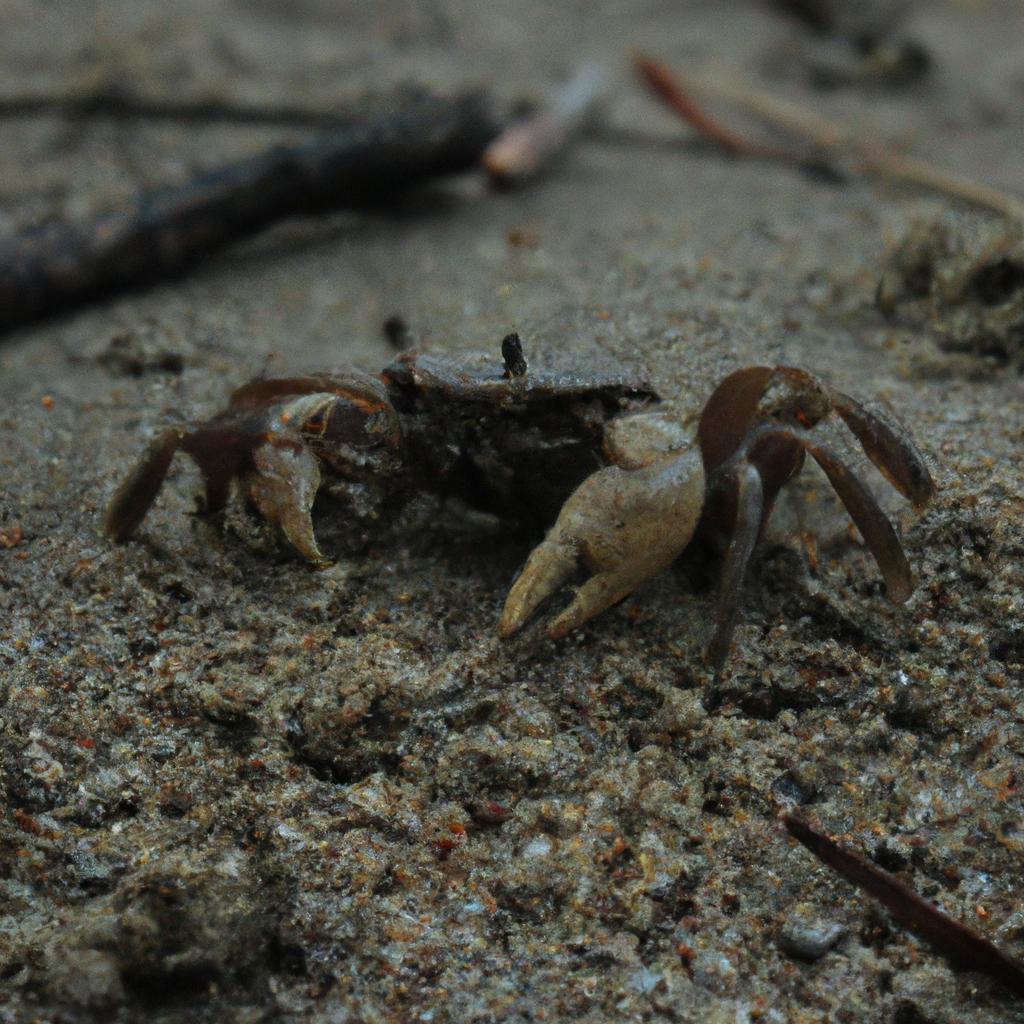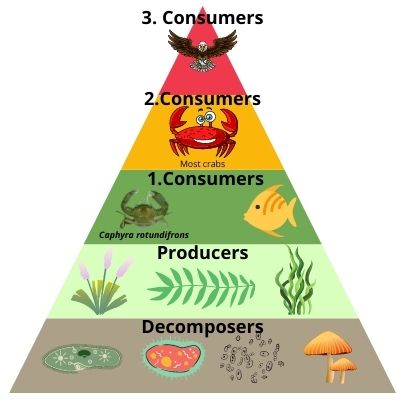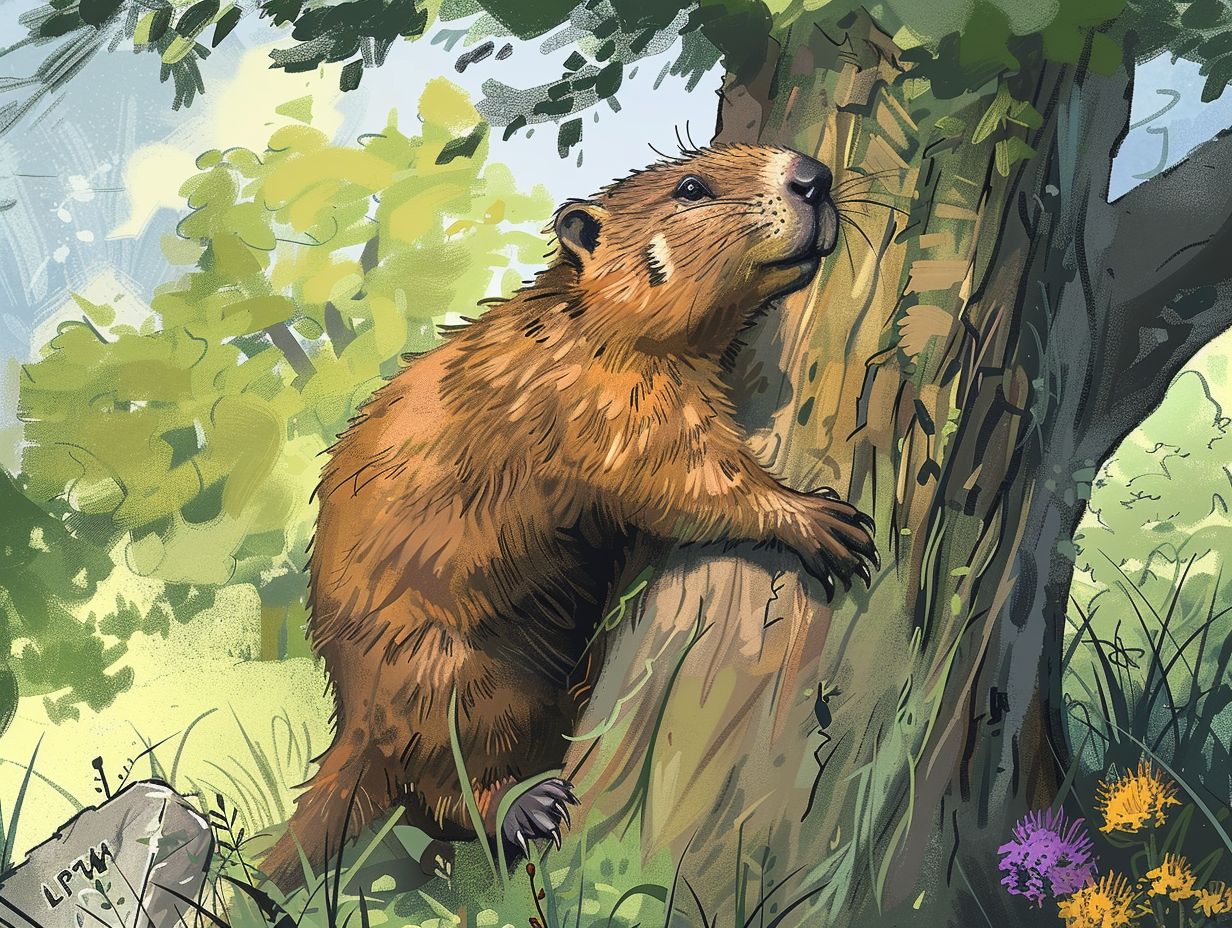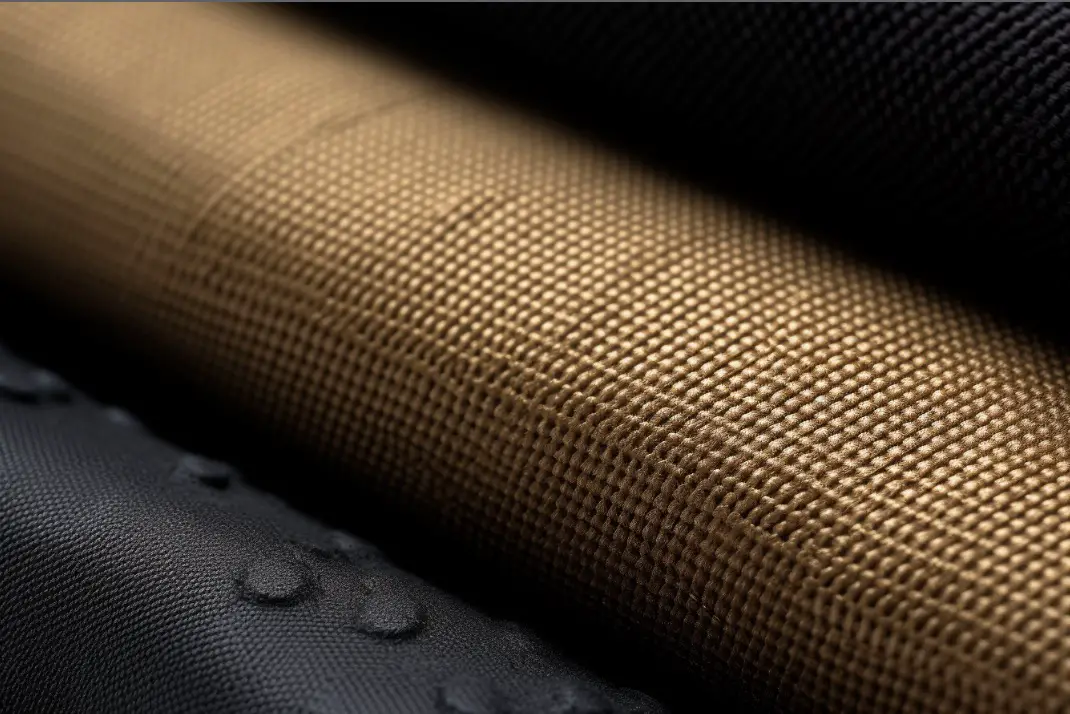Are crabs primary consumers? Yes, crabs are considered primary consumers as they primarily feed on producers like algae, plants, and detritus. However, they also eat other consumers, making them omnivores and an essential part of the marine ecosystem. In this blog post, we’ll delve deep into the fascinating world of crabs, exploring their dietary habits, ecological roles, and much more.
1. A Glimpse into the Life of Crabs
Crabs are fascinating creatures that can be found in various marine habitats, from the shallow intertidal zones to the deep sea. They belong to the order Decapoda, which also includes lobsters, shrimps, and crayfish. With over 6,700 species, crabs are among the most diverse and abundant marine animals.
Crabs are known for their distinctive features, such as their hard exoskeleton, which protects them from predators and provides support for their body. They also have a pair of strong, sharp pincers that they use for catching prey, defending themselves, and communicating with other crabs.
Crabs play a significant role in the marine ecosystem. As primary consumers, they help maintain the balance of the food chain by transferring energy from producers to higher-level consumers. They also serve as a food source for various predators, such as fish, birds, and mammals.
a. Crab Anatomy
Crabs have a unique anatomy that sets them apart from other marine creatures. Their body is divided into two main sections: the cephalothorax, which consists of the head and thorax fused together, and the abdomen. The cephalothorax is covered by a hard exoskeleton called the carapace, which provides protection and support.
Crabs have ten legs, with the front pair modified into strong, sharp pincers called chelae. These pincers are used for various tasks, such as catching prey, grooming, and even communication.

b. Crab Behavior
Crabs exhibit a range of fascinating behaviors that reflect their adaptability and intelligence. For example, they can quickly change direction and move sideways, allowing them to navigate their environment efficiently. Some species of crabs are also known to use tools, such as sponges or anemones, to protect themselves from predators.
Crabs communicate with each other through a combination of visual, tactile, and chemical cues. They use their pincers to create sounds, known as stridulations, which can convey different messages depending on the context.
2. The Diet of Crabs
Crabs are primarily consumers, feeding on a wide variety of food sources. Their diet mainly consists of algae, plants, and detritus, which are all primary producers in the marine ecosystem. However, crabs are also opportunistic feeders, consuming other consumers such as small fish, mollusks, and even other crabs when the opportunity arises.
a. Algae and Plants
Algae and plants form the base of the marine food chain and are an essential food source for many marine creatures, including crabs. Crabs consume both macroalgae, such as seaweeds, and microalgae, such as phytoplankton.
b. Detritus
Detritus is the organic matter that results from the decomposition of dead organisms and the waste products of living organisms. Crabs play a crucial role in breaking down and recycling this material, as they consume detritus and help release the nutrients back into the ecosystem.
c. Other Consumers
Crabs are not solely herbivores, and they will also consume other consumers when the opportunity arises. They are known to eat a variety of marine animals, such as small fish, mollusks, and even other crabs. This makes them omnivores and an essential part of the marine ecosystem.
3. Crabs in the Marine Food Chain
Crabs play a vital role in the marine food chain as both primary consumers and as prey for numerous predators. As primary consumers, crabs help maintain the balance of the food chain by transferring energy from producers to higher-level consumers.

a. Crabs as Primary Consumers
While crabs are mostly secondary consumers, they can act as primary consumers as well.
As primary consumers, crabs consume algae, plants, and detritus, transferring the energy they obtain from these producers to the next level of the food chain. By doing so, they help maintain the balance of the marine ecosystem and support the growth and survival of various other marine species.
b. Crabs as Prey
Crabs also serve as a food source for a wide range of marine predators, such as fish, birds, and mammals. In this role, they help transfer energy from primary consumers to higher-level consumers, contributing to the overall stability of the food chain.
Conclusion: Crabs as Primary Consumers
In conclusion, crabs are primary consumers, primarily feeding on producers like algae, plants, and detritus. However, they also eat other consumers, making them omnivores and an essential part of the marine ecosystem. Here are ten fascinating facts about crabs:
1. Crabs belong to the order Decapoda, which also includes lobsters, shrimps, and crayfish.
2. There are over 6,700 species of crabs found in various marine habitats.
3. Crabs have a hard exoskeleton that provides protection and support.
4. Their front pair of legs is modified into strong, sharp pincers called chelae.
5. Crabs can move sideways and change direction quickly.
6. Some species of crabs are known to use tools for protection.
7. Crabs communicate through visual, tactile, and chemical cues and can create sounds using their pincers.
8. Their diet mainly consists of algae, plants, and detritus.
9. Crabs are opportunistic feeders and will also consume other consumers.
10. They play a significant role in the marine food chain as both primary consumers and prey for various predators.
FAQs
Where are crabs in the food chain?
Crabs are typically secondary or tertiary consumers in the food chain, feeding on smaller organisms like plankton, mollusks, and smaller crustaceans, and being preyed upon by larger predators like fish, birds, and marine mammals.
Is a blue crab a primary consumer?
Yes, a blue crab is a primary consumer as it feeds on primary producers such as algae and other small aquatic plants.
Is a crab a primary or secondary consumer?
A crab can be both a primary and a secondary consumer, depending on its diet and the ecosystem it inhabits.
Are crabs 2nd order consumers?
Yes, crabs are considered 2nd order consumers as they feed on primary consumers such as mollusks and other small crustaceans.
What trophic level is a crab?
A crab is a secondary consumer, which means it is a carnivore that feeds on primary consumers such as small fish and mollusks. Therefore, it is at the second trophic level.
What type of crabs are secondary consumers?
Some examples of crabs that are secondary consumers include blue crabs, stone crabs, and Dungeness crabs.




